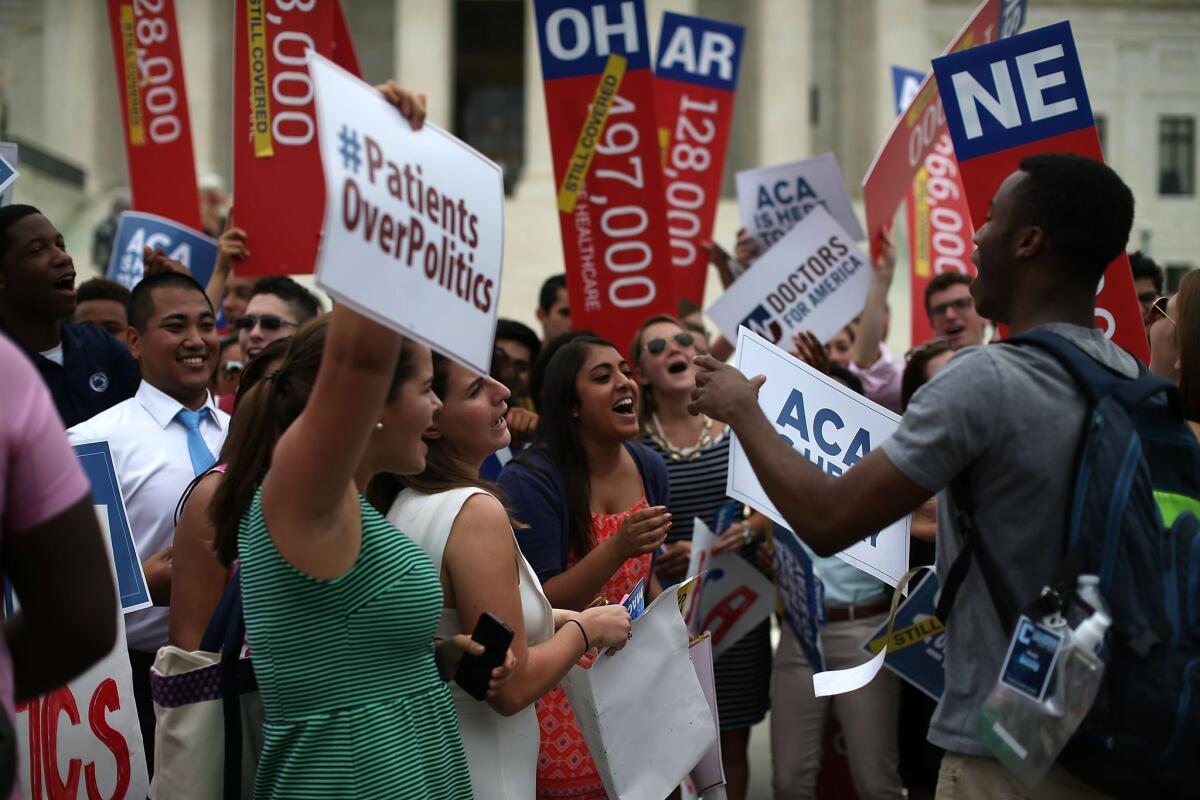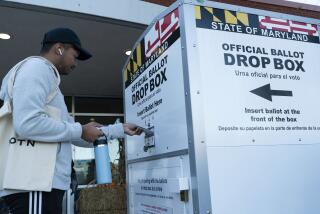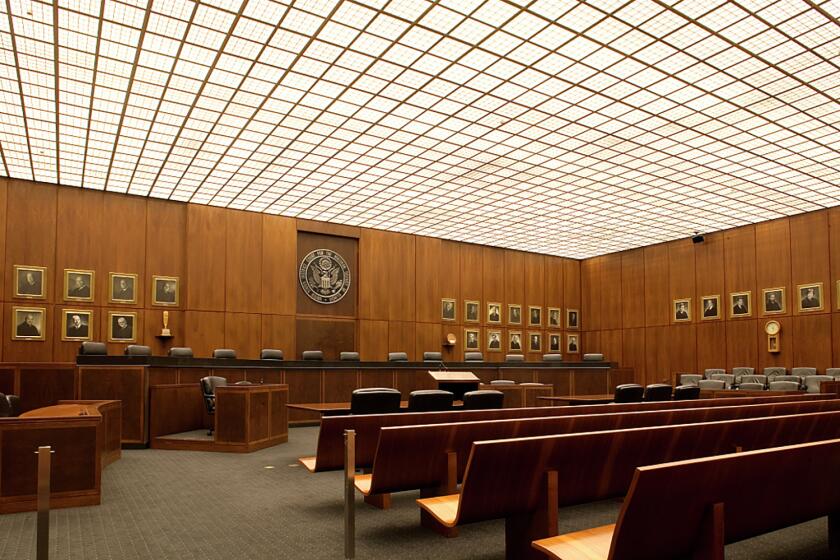Editorial: A clean bill of healthcare

College students celebrate in front of the U.S. Supreme Court after a ruling was announced in favor of the Affordable Care Act.
The Supreme Court sided with common sense over ideology Thursday when it ruled that Congress intended all low-income Americans to be eligible for subsidized health insurance under the 2010 Patient Protection and Affordable Care Act. And contrary to what opponents of the healthcare law argued, the justices did not reach that decision by ignoring the plain meaning of the law or by allowing the Obama administration to usurp the power of Congress. In fact, the opposite was true: The court turned away a bogus and historically inaccurate reading that would have contradicted the law’s very purpose.
The 6-3 ruling, written by Chief Justice John G. Roberts Jr., tries to set boundaries both for judges and for presidents when it comes to the interpretation of laws. It instructs courts to “respect the role of the Legislature, and take care not to undo what it has done.” And it cautions the executive branch that the courts, not federal agencies, will be the ones to interpret Congress’ intent when an ambiguous statutory provision raises “a question of deep ‘economic and political significance.’”
The healthcare reform law requires adult Americans to obtain comprehensive health insurance, while providing tax credits for low- and moderate-income households to make the coverage affordable. It also requires a new insurance-buying exchange in every state where the credits can be used to buy policies, and calls on the federal government to operate “such exchange” in any state that doesn’t set up one itself.
The case decided Thursday, King vs. Burwell, was ginned up by Obamacare opponents hoping to unravel the law by pulling at a loose textual thread. The plaintiffs — four lower-income Virginia residents who didn’t want to have to buy health insurance — pinned their claim to one line in the 955-page statute that says the amount of a person’s subsidy will be based on what that person paid for a policy obtained through an exchange “established by the State.” Spinning a legislative history out of whole cloth, they argued that Congress intended to withhold subsidies from states that did not set up their own exchanges as a way to pressure states to do so, even though no such threat was ever discussed by any lawmaker at any point during the months-long debate over the measure. Congress’ silence on this issue stands out as the dog that didn’t bark.
The plaintiffs’ argument, Roberts wrote, ignores the well-established principle that each provision of a law has to be read in context. Even something that appears clear on its face may, in fact, be ambiguous in light of what the rest of the law requires. The plaintiffs’ interpretation clashes with lawmakers’ intentions, which they made clear in at least two ways, Roberts wrote: They required federally run exchanges to be functionally equivalent to state-run ones, which would be impossible without subsidies, and they declared all legal U.S. residents eligible for subsidies if they met the income limits. As a consequence, he wrote, courts had to read the “established by the State” requirement as a way to distinguish each state’s official exchange from any private or national ones.
More important, the court held, the cramped reading advanced by the plaintiffs would send the insurance markets in 34 states into “death spirals” by upsetting the balance the law struck between guaranteeing coverage for all, requiring everyone to obtain it and providing subsidies to make the coverage affordable. That’s just the sort of problem Congress was trying to solve with the Affordable Care Act, wrote Roberts, who outlined the sorry history of previous reforms that didn’t include mandates or subsidies.
Justice Antonin Scalia complained that Roberts, who also penned the court’s 2012 opinion upholding the constitutionality of the law’s individual mandate, was rewriting the law’s text in order to save it. But actually, it was Scalia and the plaintiffs who were ignoring the will of Congress and the legislative history of the act. It’s risible to think that Democrats hatched a secret plan to use low-income Americans as pawns to coerce states into operating insurance exchanges, then somehow snuck it through Congress despite intense and prolonged scrutiny of the bill’s many opponents.
The ruling preserves the subsidies that make coverage affordable for nearly 9 million Americans today and more in the years to come, and we are all the better for it. Over the long run, having more Americans covered will help slow the growth of healthcare costs by increasing preventive and coordinated care while reducing expensive emergency room visits by uninsured Americans with acute problems.
Yet the law hasn’t done nearly enough to bring down the cost of care. And by requiring insurers to provide more comprehensive coverage, it raised premiums or out-of-pocket expenses for many Americans. So Congress still has much work to do on healthcare reform. Thanks to Thursday’s ruling, that work can be done while the law’s subsidies remain in place — a development that spares the Republicans who control Congress (and who cheered on the plaintiffs in this case) from having to decide whether and how to restore the subsidies. Considering that the plans they’ve floated would either cause insurance “death spirals” or leave millions of Americans uninsured, they should be thanking Roberts for not forcing them to confront such choices.
Follow the Opinion section on Twitter @latimesopinion and Facebook
More to Read
A cure for the common opinion
Get thought-provoking perspectives with our weekly newsletter.
You may occasionally receive promotional content from the Los Angeles Times.






